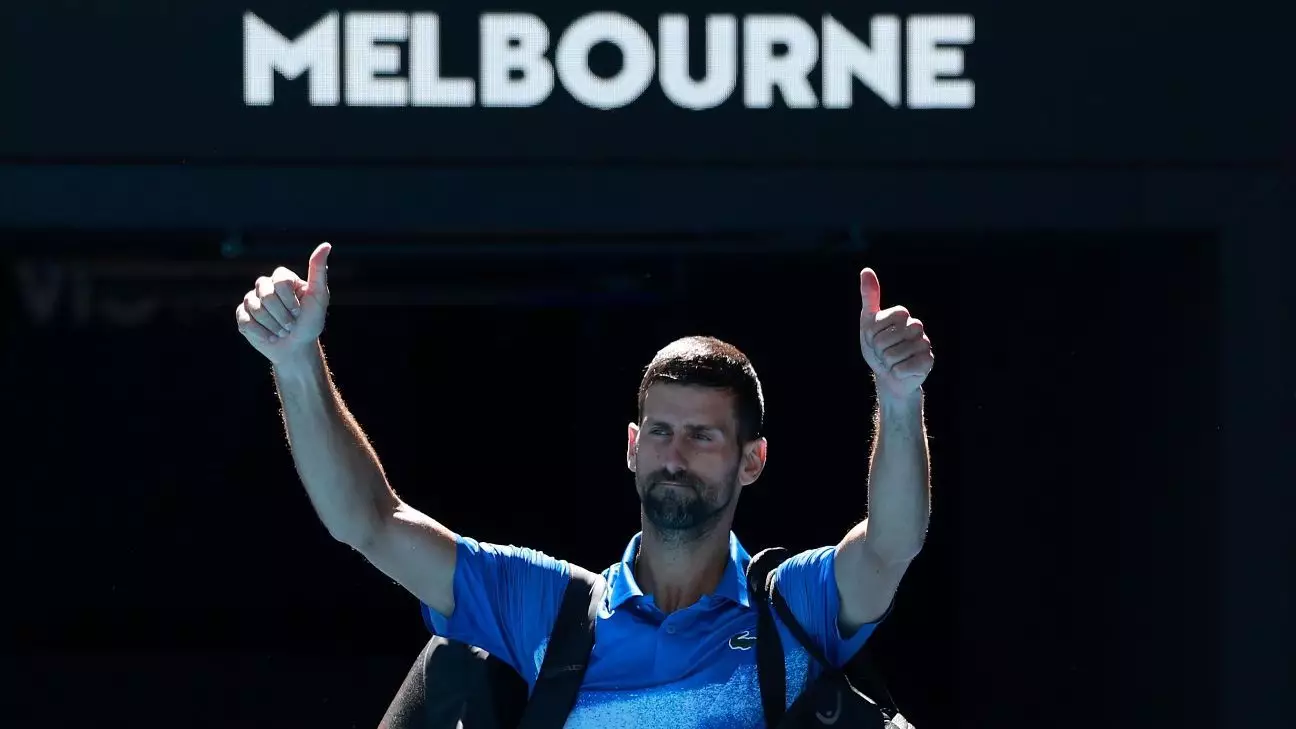Novak Djokovic, widely acclaimed as one of the greatest tennis players in history, found himself at the heart of an unsettling controversy following his exit from the Australian Open semifinals. The incident unfolded soon after Djokovic posted an MRI scan of his injured left hamstring on social media, aimed at countering the opinions of self-proclaimed sports injury experts. This move, however, only illuminated the broader narrative of athlete scrutiny and public expectations in an increasingly demanding sports environment.
Djokovic’s retirement came after just one set against Alexander Zverev, a decision that drew immediate disapproval from the audience. The symphony of boos that resonated throughout Rod Laver Arena after he shook hands with Zverev highlighted the disconnect between player struggles and fan expectations. Despite having previously battled through a challenging match against Carlos Alcaraz, Djokovic was unable to sustain his performance due to the intensifying pain. His emotional response to the crowd encapsulated the unique pressures elite athletes face—caught between their aspirations and the reality of their physical limitations.
The Price of Greatness: Expectations and Realities
The loyalty and dedication that fans often expect from their favorite athletes can sometimes morph into hostility, particularly in an intense competitive setting like a Grand Slam tournament. Zverev’s defense of Djokovic following the match poignantly illustrated this conflict. He reminded spectators of Djokovic’s monumental contributions to the sport, reinforcing that athletes are human beings enduring real hardships. Even as people invest emotionally and financially in the sport, their reactions can betray a lack of understanding regarding athlete health and well-being.
The bigger picture here involves not just Djokovic’s injury but the culture within sports that often prioritizes victories over the personal well-being of athletes. Statements made by Djokovic during the post-match conference, where he recounted his struggle to manage the muscle tear, painted a worrying picture. It underscored a reality where athletes, propelled by a passionate desire to succeed, sometimes push their bodies beyond their limits, often to the detriment of their long-term health.
Moving Forward: The Path of Recovery and Redemption
As Djokovic navigates the path of recovery, his experience serves as a poignant reminder of the invisible battles athletes face. The lack of details regarding his injury prognosis on social media perhaps indicates a reluctance to share vulnerabilities with a judgmental public. Fans eagerly anticipate updates, yet it’s crucial to remember that an athlete’s journey involves as much physical struggle as it does emotional resilience.
As tennis enthusiasts and the broader sporting community reflect on Djokovic’s recent hardships, perhaps a culture shift is necessary—one that embraces understanding and compassion rather than criticism. The landscape of professional sports can be unforgiving, but it can also foster an environment of support, promoting the idea that enjoying the spectacle of sport should not come at the cost of an athlete’s well-being. The narrative surrounding Djokovic’s injury might serve as a crucial turning point in how we discuss athlete health, ultimately leading to healthier relationships between competitors and their audiences.


Leave a Reply